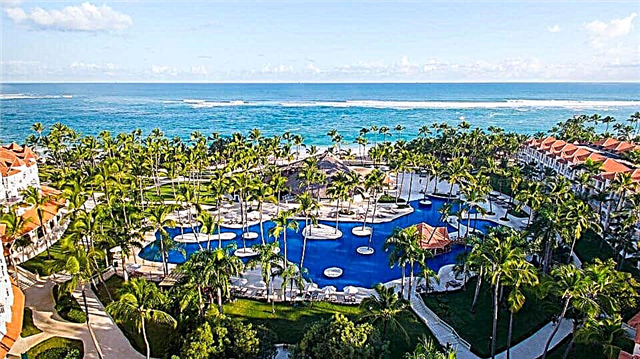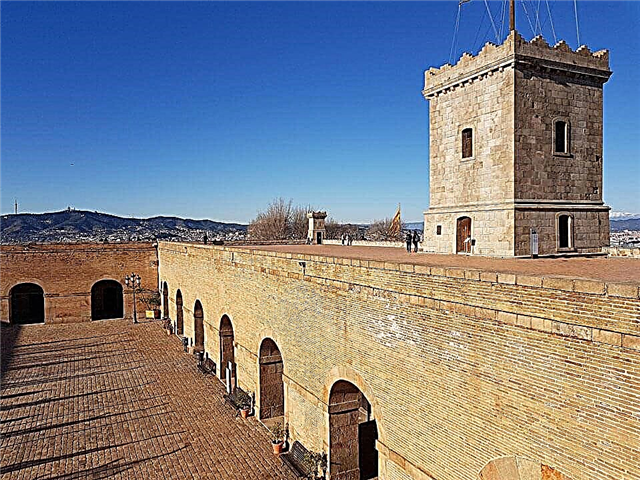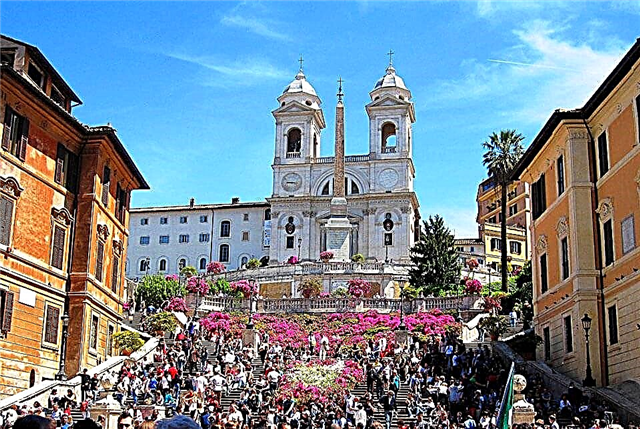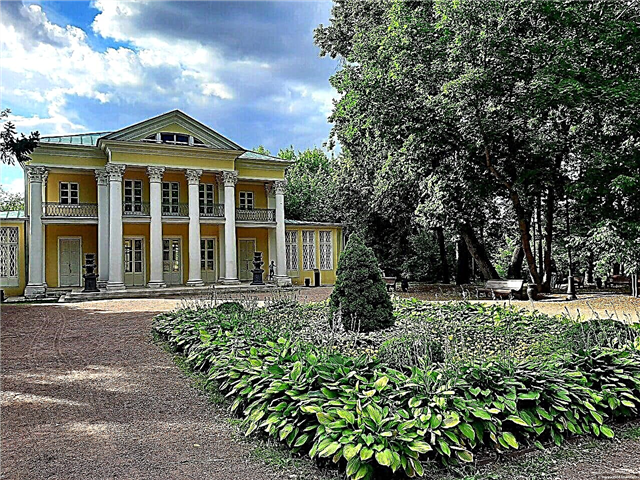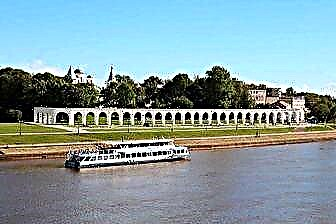Veliky Novgorod is a city-museum of Ancient Rus, as well as the birthplace of Russian statehood and democracy. It was here that Rurik came with his retinue, later the Novgorod Republic arose and flourished here, and for the first time the bell, calling the people's veche, struck. Veliky Novgorod is a unique place in terms of architecture. Only here a huge number of monuments of the XI-XVI centuries have been preserved, massively lost throughout the rest of Russia. Ancient churches and monasteries, powerful defensive towers of the Novgorod fortress, 400-year-old wooden houses - all this splendor awaits tourists who decide to visit this wonderful city.

The best hotels and hotels at affordable prices.
from 500 rubles / day
What to see and where to go in Veliky Novgorod?
The most interesting and beautiful places for walking. Photos and a short description.
Novgorod Detinets
The Novgorod Fortress stands on the left bank of the Volkhov River in the historic center of the city. The first mention of it dates back to the beginning of the XI century, in the XII century it becomes a stronghold of the Novgorod Veche Republic. In the 15th century, when the city became part of the Moscow principality, the complex was significantly rebuilt. A large number of towers, ancient temples and sections of a stone wall have survived to this day.

Yaroslav's Court and Bargaining
An architectural complex located on the opposite side of the Volkhov River from the fortress. Monuments of the XII-XVI centuries have been preserved on its territory, including the Nikolsky Cathedral built in 1113 and the Church of Praskeva Pyatnitsa, dated to the XIII century. The place was named after Prince Yaroslav the Wise. In ancient times, noisy fairs were held here. The most recent construction is the arcade of the Gostiny Dvor, which consists of several dozen white-stone arches.

Sophia Cathedral
The cathedral is considered one of the oldest churches in Russia; it appeared on the Novgorod land at the beginning of the 11th century and for many centuries was the spiritual center of the republic. In subsequent years, it was rebuilt and expanded several times. The architecture of the temple is quite unique, of particular interest is the 15th century belfry, which consists of five spans. Only three similar structures were built.

Monument "Millennium of Russia"
A monument erected in 1862 in honor of the 1000th anniversary of the vocation of the Varangians. The monument is made in the form of a large ball - the royal state, standing on a pedestal. In total, 128 figures can be distinguished here, arranged in tiers: at the very top there is an angel - the personification of Orthodoxy and a woman depicting Russia, below there are images of princes, church hierarchs and enlighteners.

Victory Monument
The monument was erected on Ekaterininskaya Gorka in 1974 on the day of the 30th anniversary of the liberation of Veliky Novgorod from the German invaders. The sculptural group consists of a rider on a horse, crushing a swastika under him, and a tower with a rook on top, inside which there is a spiral staircase. The warrior holds a sword in his hand and, as it were, personifies the collective image of all the defenders of the Russian land.

"Vitoslavlitsy"
Museum of Wooden Architecture, located a few kilometers from the city. It is named after the village that was located here from the 12th to the 18th centuries. The open-air exposition appeared in 1964. Residential buildings were brought here - wooden architectural monuments, industrial buildings, a church. Folklore festivals and festive festivities are held on the territory of the museum.

Churches and temples of Veliky Novgorod
The architecture of Veliky Novgorod is unique in that many ancient temples have survived here, many of which are included in the UNESCO World Heritage List. There are about 30 religious buildings in the city. Many of them were built between the 11th and 16th centuries, others belong to a more modern stage. Among the most ancient are the Cathedral of the Nativity of the Virgin with 800-year-old frescoes, the Church of Paraskeva-Pyatnitsa on the Torga, the Nikolo-Dvorishchensky Cathedral and the Church of Fyodor Stratilat on the Brook. Many buildings were rebuilt at a later time, preserving the ancient architectural forms. In some churches, wall paintings of great cultural value have been preserved.

Monasteries of Veliky Novgorod
Monastic cloisters of the Novgorod land are valuable monuments of religious architecture from the period of the XII-XV centuries. These include the Perynsky Skete, the Varlaam-Khutynsky Spaso-Preobrazhensky Convent, the Nikolo-Vyazhischsky Convent, the St. George Monastery, the Holy Trinity Mikhailo-Klopsky Monastery and others. Few places in Russia can see such a large number of ancient architectural monuments, but in Veliky Novgorod, many of them not only successfully survived to this day, but also survived in excellent condition. Today Novgorod monasteries are not only religious centers, but also popular tourist attractions.

Rurik's settlement
The first residence of the Novgorod princes, where, according to legend, Rurik and his retinue settled after calling him to the kingdom. The construction of the settlement dates back to the 9th century. Earlier, more ancient settlements were located in its place. During archaeological excavations, items of military equipment and clothing of the Varangians (Scandinavians), as well as princely seals, coins from different countries, jewelry and fragments of dishes were found here.

Public places building
The facility is located on the territory of the Novgorodsky Detinets. It was erected in the 18th century to replace the clerical chamber. Courts, treasury and other administrative institutions were located here. Today the premises are occupied by a museum exposition with historical and art collections. The building has a classic look and blends harmoniously with the surrounding architecture. At the entrance there are statues of lions made of cast iron, brought here from the estate of Count A.A.Arakcheev.

Chime
The clock tower located in the northwestern part of the Novgorodsky Detinets. The building was built in the 17th century; earlier in its place there was another tower, erected in the 15th century. Unfortunately, the name of the author of the project has not been preserved. Presumably, the bell tower of the Church of St. Sergius of Radonezh served as the bell. The tower is the tallest structure in the Kremlin, therefore it immediately attracts attention.

The Lord's Chamber
An architectural monument of the 15th century, a structure built in a style similar to brick Gothic. It is the oldest surviving civil building not only in Veliky Novgorod, but throughout the entire territory of Russia. Previously, the chamber was part of the Vladychny courtyard complex. According to the Novgorod chronicle, German architects took part in its construction, so its appearance turned out to be a little European.

Gate tower of Gostiny Dvor
The building is also known under the names "Yaroslav's Tower" and "Gridnitsa". Experts have not yet come to a consensus on what it was built for. At various times, it housed an orphanage, administrative offices, a school, an archive and even residential apartments (under Soviet rule). Today, the Gate Tower houses a museum exposition with a variety of Christian artifacts.

Alekseevskaya tower
The only surviving structure of the Okolny city is the ring of external defensive structures of Veliky Novgorod. It was built in the 16th century. The thickness of the walls of the building reaches 4.5 meters, the height of the tower is about 15 meters, and the diameter is 17 meters. By the beginning of the 20th century, the structure had fallen into disrepair, but restoration was carried out only in the 1990s, giving the building a historical look.

Center for Musical Antiquities V.I. Povetkin
Museum and cultural center, created by the artist-restorer V. Povetkin and named in his honor. In this place, they restore the appearance and sound of ancient instruments of the X-XV centuries, as well as teach the original crafts. Here you can also hear the traditional tunes of the Novgorod, Vologda and Pskov regions, ancient ritual songs and forgotten motifs performed on the psaltery and the whistle flute.

Art Museum
The museum exposition is located on the territory of the former Noble Assembly in a house - an architectural monument of the 19th century. The collection is dedicated to Russian art of the 17th – 20th centuries. Here are collected paintings, drawings, miniatures and sculptures, there are even works by Aivazovsky, Shishkin, Repin and Bryullov. Most of the exhibits came here after the confiscation of property from the estates of aristocrats in the 1920s.

Museum of Artistic Culture of the Novgorod Land
The museum was opened in 2002 in one of the buildings of the Desyatin Monastery, built in the XIV century. The exposition is composed of works by Novgorod artists of the late XX - early XXI centuries. In addition to paintings, visitors can see porcelain and glass products made by local craftsmen in accordance with ancient traditions. For those who wish, master classes and thematic classes are held.

Academic Drama Theater. F.M. Dostoevsky
The building of the drama theater, built in 1987 according to the project of Yu. S. Somov, deserves special attention of tourists. The architect combined in his creation modern trends with classical traditions typical for urban planning in Veliky Novgorod. He took the forms of ancient churches and towers as a basis, adding columns, arches and vaults along the way. The result is an interesting mix of styles.

Novgorod-on-Volkhov
Novgorod-on-Volkhov is the main railway station of the city. The first wooden station was built at the expense of the merchant A. Vargunin; it stood until the Great Patriotic War. The modern building was erected in 1953; in the early 2000s, it was completely reconstructed. From here, trains leave for Moscow, Murmansk, St. Petersburg and Minsk.

Kremlin park
The park is located in the historical center of Veliky Novgorod, on three sides it surrounds the Novgorodsky Detinets fortress and is closely adjacent to its walls. The park was founded at the beginning of the 19th century on the site of former earthen fortifications. In 1885, a wooden theater building was built here. During the Second World War, the plantings were almost completely destroyed, as the German troops used trees for firewood. The park was restored in the post-war years.

Fountain "Sadko and Princess Volkhova"
Sadko and Princess Volkhova is the main city fountain located in the central part of Veliky Novgorod. The sculptural composition was erected in 1978 on the site of the bust of Stalin. It consists of two figures of famous heroes of Russian epics. The group is set in the middle of a mosaic bowl, into which streams of water flow down. In 2009, for the 1150th anniversary of the city, the landmark was restored.

Hanseatic fountain
The Hanseatic fountain became a symbol of the cultural and economic forum held in Veliky Novgorod in 2009. The composition is made in the form of a granite circle with mosaic coats of arms of 16 states that are members of the Hanseatic League of the New Age. It symbolizes the negotiating table, as it were. Water flows smoothly over the smooth surface of the fountain, completely covering it with a thin film.

Kremlin beach
A sandy strip on the banks of the Volkhov River, stretching along the walls of the city fortress. In summer, this place turns into the main recreation area for residents of Veliky Novgorod. There is all the necessary infrastructure here: changing cabins, sports grounds, children's slides, umbrellas to protect from the sun. On sunny days, the beach is quite crowded. The place is perfect for swimming and sunbathing, as well as for admiring the surrounding landscapes.

Pedestrian bridge
A bridge across the Volkhov and connecting the Trade and Sofia sides. It is located near the Novgorodsky Detinets. According to the Novgorod Chronicle, already in the XII century there was a Great Bridge on this site, which existed until 1944, until the moment when it was blown up by the retreating German troops. The modern pontoon was built in 1987. Its length is just over 220 meters.

Volkhov River and Lake Ilmen
The Volkhov River flows out of Lake Ilmen, flows in a northerly direction and flows into Lake Ladoga. Its total length is 224 km. Since ancient times, people have settled in Priilmenye; many legends and tales are associated with this place. It was in these parts that Rurik founded his first settlement, that is, from here the Russian state came. The river and lake are picturesque natural attractions of Veliky Novgorod.




